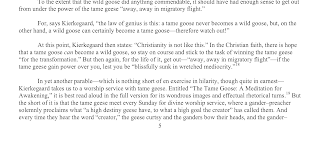Tabernacle In My Backyard
Hebrews 8:5 who serve the copy and shadow of the heavenly things, as Moses was divinely instructed when he was about to make the tabernacle. For He said, "See that you make all things according to the pattern shown you on the mountain."
Removal. Reminds me of when my dad bought, for me, a 1972 Plymouth Valiant off a dead's man estate, the deceased being an old school Catholic--he had fixed several religious medallions to the the dashboard of the car. I was quite bemused that my dad, being an agnostic, didn't remove the icons of the saints whose skill-set was safety in travels. He commented, as a lapsed Catholic himself, that while he didn't ascribe much power to these medallions to protect the driver and passengers from harm, he has enough faith not to tempt God by removing them. Since I had solidly renounced Catholic mumbo-jumbo voodoo by then, when I came into possession of the car--in a gesture worthy of Luther himself--I tossed the medals into the garbage. The just shall live by faith. The Reformation, 500 years ago in two days, saved Catholicism from its own rot, rust, and corruption.
Ascribing power and authority to objects is tricky business. Most of the time it is idolatry. There are instances however when an object did have represented power. Like Moses' Rod. The object itself had no power in and of itself but it represented God's power and was in instrument in His hand if that makes sense, or by delegation, in the hand of someone in God's service. In Protestant circles there has been a strong anti-veneration of art as a result. Us anti-papists are quite reticent (I have no bone to pick with the present Pope as a man BUT as a Vicar of Christ) to employ art to represent attributes of God, mainly His beauty, but also other qualities, lest the means becomes the ends and winds up being worshiped. So most artistic work by evangelicals--music, painting, writing--is awful. Its mediocrity, in essence, eliminates any possibility that a rational soul would worship it. I said rational as a caveat.
The Tabernacle in the Old Testament was a place for God's holiness to abide. It was not just functional, it was beautiful in its construction. And I think it shows that God's people can produce beauty in the material world without fear that doing so inherently corrupts us. I suppose a good test would be does the art point to something greater---ultimately God Himself? I would argue that the crucifixion of Jesus was not only a work of redemption, but also a work of art, showing God's compassion to a broken world.
See this section from Les Miserables on the uses of beauty (I am reading Les Mis as my new novel after Moby Dick)
"The garden, which had been rather spoiled by the ugly buildings which we have mentioned, was composed of four alleys in cross-form, radiating from a tank. Another walk made the circuit of the garden, and skirted the white wall which enclosed it. These alleys left behind them four square plots rimmed with box. In three of these, Madame Magloire cultivated vegetables; in the fourth, the Bishop had planted some flowers; here and there stood a few fruit-trees. Madame Magloire had once remarked, with a sort of gentle malice: “Monseigneur, you who turn everything to account, have, nevertheless, one useless plot. It would be better to grow salads there than bouquets.” “Madame Magloire,” retorted the Bishop, “you are mistaken. The beautiful is as useful as the useful.” He added after a pause, “More so, perhaps.”
I also have been recovering all kinds of tools and utensils from the basement and storage closets including a Coleman Stove and Coleman Lantern, and other accouterments of the outdoor life.
All tools to bring me into beauty, the handiwork of God Himself, in the nighttime skies.



Comments